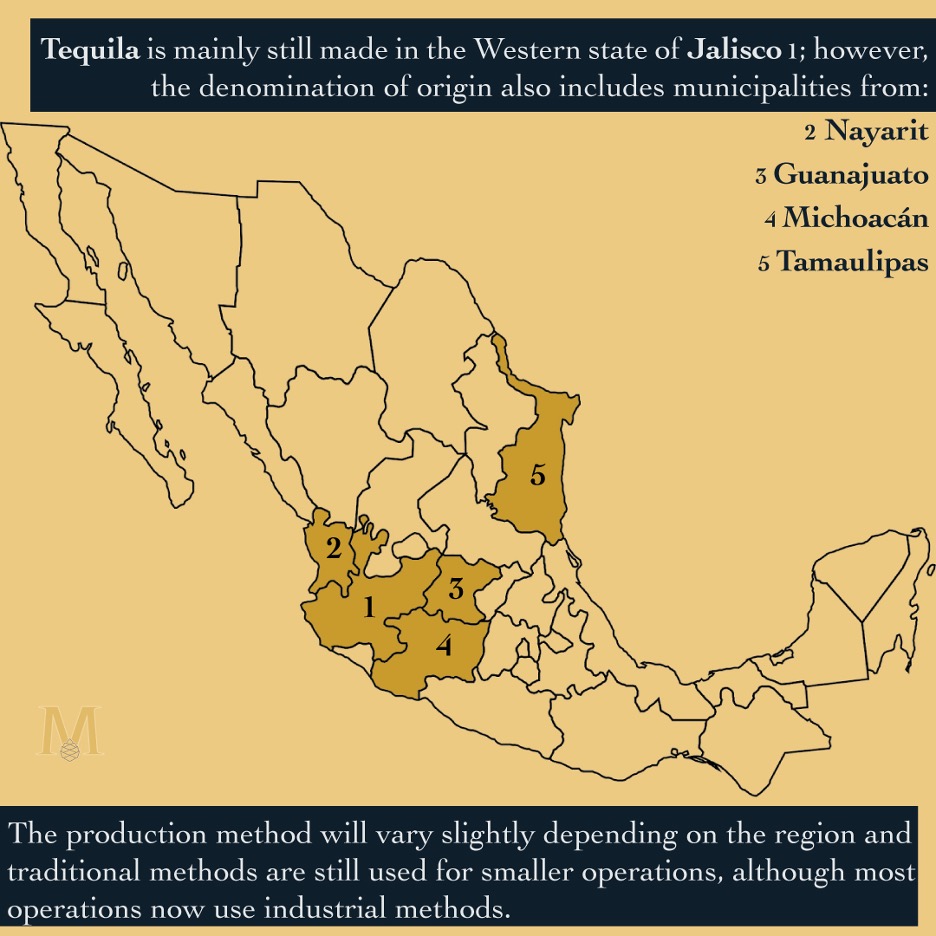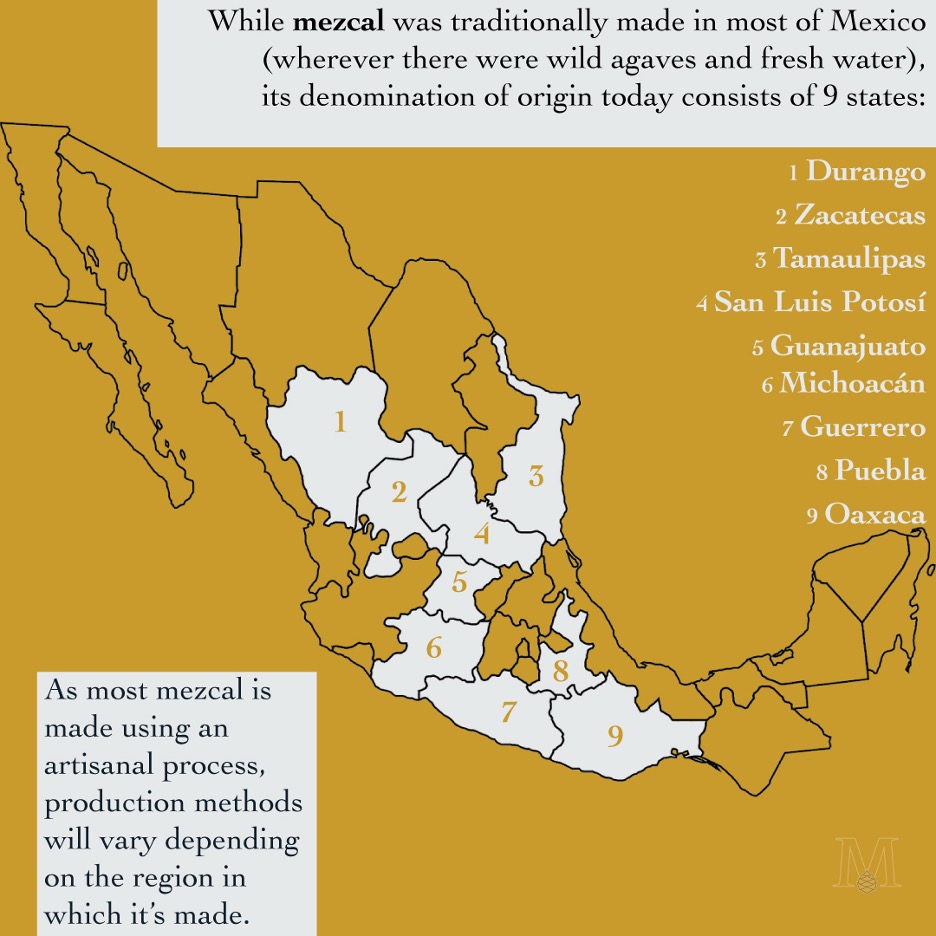Agave 101: Mezcal's Proud History
Agave 101
In artisanal mezcal there are only two ingredients: agave and water. Most mezcal is drunk joven (blanco), meaning that it is unaged or at the most, matured briefly in glass (not in barrels). This is to preserve the essence of the agave plant and to impart only the natural flavours that it carries as it moves through the artisanal process of cooking, fermentation and distillation. While we agree there are some delicious añejos out there and are great on occasion, we recommend turning to mezcal joven in order to get a better understanding of the flavour profiles.
What is maguey? What is agave?
You’ve probably heard of the word agave. Maybe you’ve heard of the word maguey (pronounciation: mah-gay).
Are they the same? What’s the difference?
In fact, they are two different words to describe the same plant used to make mezcal and tequila.
Maguey is the common name of the plant that is used in Mexico and what you might see on your bottle. Unlike most Spanish words that describe plants native to Mexico, the word maguey does not come from Náhuatl (the language of the Aztecs), instead coming from the Taíno people who inhabited various Antillean islands of the Caribbean.
The word agave is the scientific name for the plant. Carl Linnaeus, an 18th Century Swedish botanist deemed “The father of modern taxonomy”, first described the plant botanically and took “agave” from the Greek word, “agavos”, meaning noble or admirable. This was due to the numerous uses exploited by the Indigenous peoples as well as the sheer beauty and presence of the plant. If you’ve ever stood amongst them, it is easy to see it is aptly named.
TEQUILA VS. MEZCAL
Tequila is in fact a mezcal, but mezcal is not tequila. Hundreds of years ago, the word tequila as we know it was not used. Long before the Spanish came, the Indigenous peoples were using the agave plant for its fibers, general construction of dwellings, medicine and much more. Eventually, they learned how to extract the sugary juice (aguamiel) from the heart of the plant with a hollowed-out gourd. They then learned how to ferment aguamiel into an alcoholic beverage called octli that we know today as pulque. Pulque was a sacred drink to the Aztecs and was reserved mostly for royalty, the elderly and for ceremonial purposes.
As far as official history goes, there is no record of Prehispanic distillation of alcoholic beverages (although historians have not ruled it out). However, with Spanish colonization of what today is Mexico, trade routes and migration brought distillation technologies of Arabic and Asian origin. These methods were adapted by the Mexican people in order to distill what would be the first mezcal.
The word mezcal is in fact derived from two Aztec words:
Metl – meaning maguey or agave
Izcalli – meaning cooked
Together they describe the distillate of cooked agave we know today, mezcal. Based on factual history, it is most likely that mezcal was first distilled in Mexico in the mid-1500s; however, the first mention of it in texts was not until the year 1616, where it was described in the southern portion of what today is the state of Jalisco. Mezcal became extremely popular throughout Mexico due to the abundance of the wild plant. Mezcal could be found just about anywhere where agave grew wild and close to a fresh water source for distillation. Until the at least the 18th century, mezcal was to referred to as vino mezcal and in the 19th century we start to see the ‘vino’ being dropped.
Getting back to tequila. At this time in the 19th century, Tequila was still just a region, the town of Tequila, a volcano and adjacent valley. The mezcal from Tequila started to gain fame as the mezcal or “extract of Tequila”. It is claimed that Don Cenobio Sauza, of famed Sauza tequilas, decided to shorten it to just “tequila” for sale in the American market. While before, tequila was made from a variety of agaves, the increased demand for product required an economic decision. Blue agave or Agave tequilana Weber is among the few types of agaves that can be easily cultivated in rows. It also has an exceptional yield based on the sugar content in its piña, making it the perfect candidate to help ramp up production.
Now, is using only one variety of agave an advantage or a disadvantage? Well, it could be seen as both. Using only one variety tends to highlight different aspects such as the terroir of the microclimate, production methods and the touch of the maestro (who oversees production). On the other side, creating a monoculture leaves the variety susceptible to disease and to being wiped out. It also leaves us without many of the varietals that were traditionally distilled in Jalisco and the surrounding areas in the denomination of origin.
DENOMINACIÓN DE ORIGEN (DOM)
Here we will discuss what is the denomination of origin for tequila and mezcal. It is important that we outline that they are two separate denominations: one for the word tequila and another for the word mezcal.
Mezcal’s DOM includes Durango, Zacatecas, San Luis Potosí, Guerrero and Oaxaca in their entirety, while only certain municipalities of Tamaulipas, Guanajuato, Michoacán and Puebla.


VARIETALS AND NAMING
When checking out the bottle, one of the main pieces of information that you’ll find on the front is the type of agave. This may be listed with the common name or the scientific name. The correct nomenclature is to use the word “maguey” when referring to the common name of the varietal and the word “agave” when referring the scientific name. For example, the main species of plant in the northern state of Durango is commonly referred to as cenizo; however, the scientific name is durangensis (Latin: from Durango). Therefore, the names should be:
Maguey Cenizo
OR
Agave durangensis
The scientific names always use “agave”, followed by an epithet which is used to describe the plant in some way. The epithet is derived from location, a characteristic of the plant, or a variation on the name of the taxonomist who first described it. Let’s look at a couple more examples.
Agave cupreata – from Latin, cuprum, which means copper. This is a reference to the copper-coloured thorns of this species.
Agave karwinskii – first described by the German naturalist, Joseph Gerhand Zuccarini; however, he wanted to dedicate it to a peer, Baron Wilhelm Friedrich von Karwinsky von Karwin.
As some of the plants have a fairly large distribution throughout Mexico, the common names can change. Therefore, scientific names can help to properly identify the varietal. Nevertheless, as some subspecies haven’t been thoroughly studied yet, the common name may be a way to help to distinguish two different subspecies.
